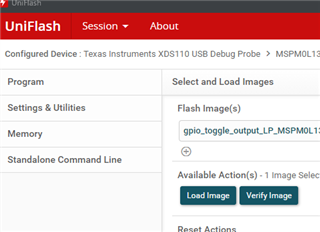Other Parts Discussed in Thread: UNIFLASH
Tool/software:
I want to read the entire program so that I can compare it to another device.
I select the connection and device then goto the Memory and click on Read Target Device. Does this read the entire program? Or do I have to select Program and manually enter the program addresses and do multiple reads?
One would think Read Target Device would read the program in one fell swoop, but who knows? Then when I want to Export the memory do I need to enter the address range again?
In the Program portion there are log and Verify buttons, how about adding a load as well?
By selecting the connection and device it seems it should know what the correct program address ranges to read and export rather then relying on the user to figure these out.
Too many ways to mess up!
John


